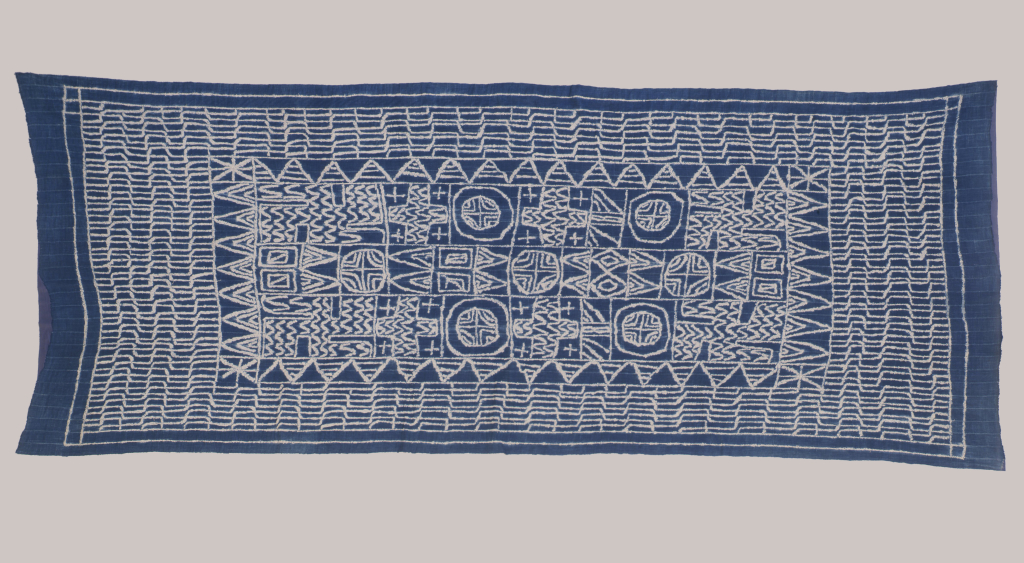Royal Tapestry

unknown Bamum Kingdom artist, Royal Tapestry, early 20th century, cotton with indigo dye, The Paul and Clara Gebauer Collection of Cameroon Art; Museum Purchase: Edwin Binney, 3rd, Fund, public domain, 70.10.81
This work is not currently on view.
- Title
Royal Tapestry
- Artist
- Date
early 20th century
- Medium
cotton with indigo dye
- Dimensions (H x W x D)
72 in x 216 in
- Collection Area
African Art
- Category
Cameroon
Clothing and Textiles
- Object Type
tapestry
- Culture
Bamum Kingdom
- Credit Line
The Paul and Clara Gebauer Collection of Cameroon Art; Museum Purchase: Edwin Binney, 3rd, Fund
- Accession Number
70.10.81
- Copyright
public domain
- Terms
Grassfields kings surrounded themselves with exquisite artworks and rare imported goods, among them cotton cloths called ndop, which were dyed with indigo and patterned with a resist-dye technique. In the nineteenth century, these cloths were imported by Hausa traders through Wukari, a town located in what is now northern Nigeria. At the turn of the century, however, the Bamum king Njoya Ibrahim (ruled ca. 1886-1933) encouraged artists at his court to begin their own production of these prestigious cloths.
In Bamum, the linear patterns of the cloths became more elaborate than those of the imported ones, attesting to the skill and ingenuity of the Bamum artists. This cloth is said to show an idealized groundplan of King Njoya's large palace, which was destroyed by fire in 1913. The triangular and circular patterns represent the private quarters of the ruler and the queen mother, the houses of the ruler's wives, and the reception halls, shrines, and ceremonial quarters, among other structures.
In the first decade of the twentieth century, the artists at the Bamum court worked exclusively for the Bamum. However, as times changed, King Njoya released them from his service so they could cater to foreign residents and, increasingly, tourists. This cloth was undoubtedly produced for this new clientele. It was purchased in 1936 at the Fumban Museum of the Craft Guilds in Bamum.









